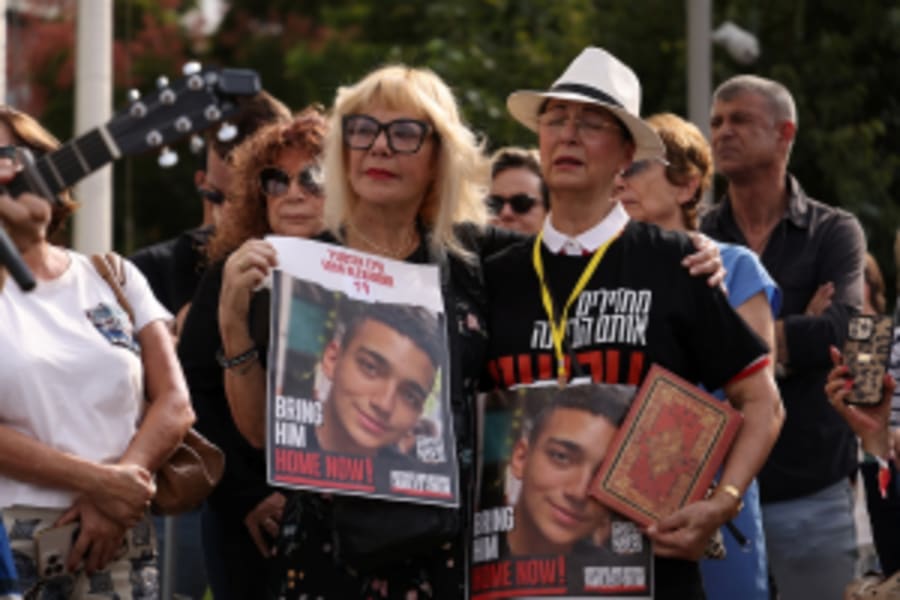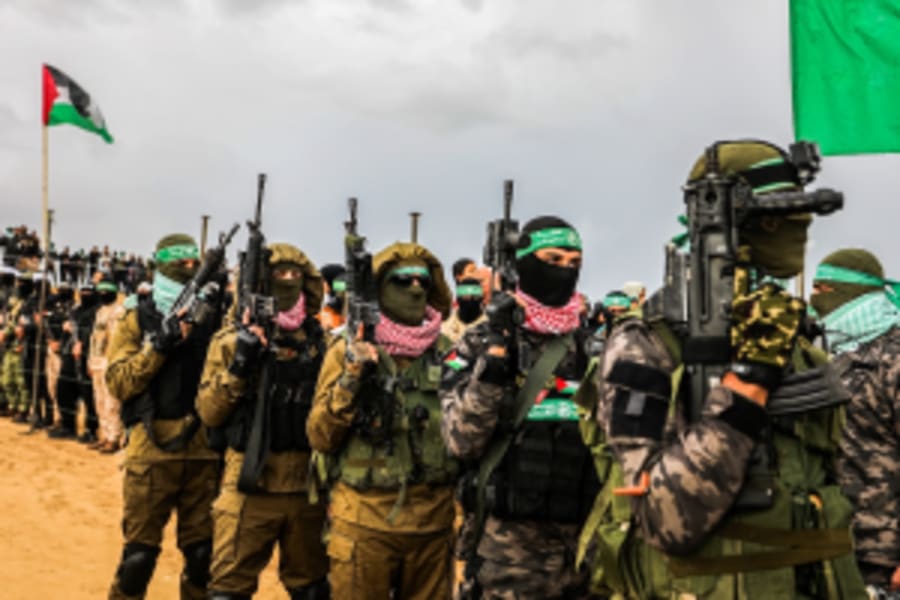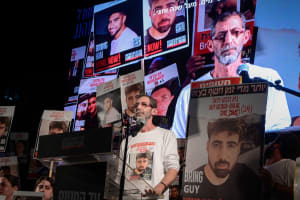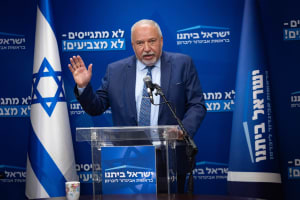IDF’s consistent focus on Gaza tunnels forced Sinwar above ground, where he was killed
Destruction of key tunnels and targeted strikes forced Hamas leader into confrontation with IDF soldiers
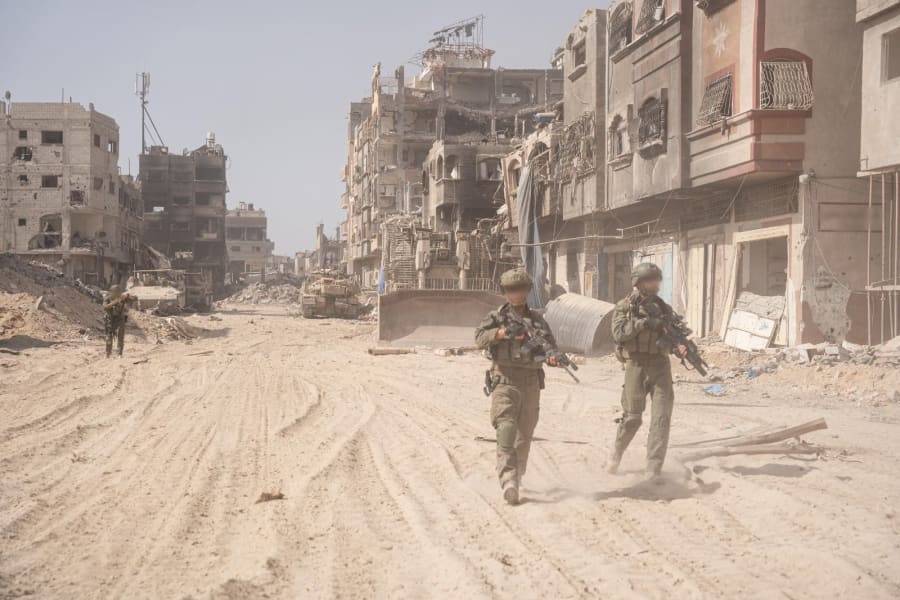
Israel's focus on finding and destroying the Hamas terror tunnels led to the killing of Hamas leader Yahya Sinwar, according to a report in the Wall Street Journal.
A consistent feature of the IDF’s reporting on the Gaza War has been a focus on the Hamas-constructed terror tunnel network under the Gaza Strip.
The tunnel system, as of Oct. 7, 2023, was extensive, around 500 kilometers in length, running north to south through the Strip and connecting most of Hamas’ command and control centers.
At various points, the tunnels connected to living quarters, detention cells for holding captured Israeli hostages, command and control centers, and weapons depots.
Hamas military leader Yahya Sinwar escaped into the tunnels the evening of October 6, mere hours before terrorists under his command broke into Israel, committing the worst massacre of Jews since the Holocaust.
For months, Sinwar stayed in the tunnels, hiding from the Israeli airstrikes and the entry of IDF soldiers into the Gaza Strip.
Sinwar met with several of the hostages who were later released in the tunnels under Gaza, assuring them in Hebrew that Hamas did not mean to kill them, but intended to use them as bargaining chips to release Palestinian prisoners.
Hamas apparently believed that Israel would not concentrate its strikes on the tunnels out of fear of harming the hostages and due to the inherent advantages that Hamas fighters would have in face-to-face underground combat.
That belief turned out to be wrong. The IDF focused on finding and destroying critical sections of the tunnel system, cutting off the main connections between different cities and neighborhoods in Gaza.
The IDF sent in dogs with cameras and drones to search out the tunnels, looking for evidence of the hostages and of Yahya Sinwar. On one occasion, soldiers arrived only minutes after Sinwar had fled. They found a cup of coffee that was still hot and signs that Sinwar had quickly abandoned the living quarters.
The report in the Wall Street Journal claims that early in the war, Arab negotiators offered Sinwar the chance to escape if Hamas would allow Egypt to negotiate on its behalf.
Sinwar reportedly told the Arab negotiators, “I’m not under siege, I’m on Palestinian soil.”
As the hunt for Sinwar continued, Israel began to eliminate other senior Hamas commanders and leaders through targeted strikes based on critical intelligence seized from the tunnels and through the work of the Shin Bet and military intelligence.
In January, the IDF killed Hamas deputy leader Saleh al-Arouri in a drone strike in Dahiyeh, the Hezbollah-controlled neighborhood of Beirut.
In March, the IDF took out Hamas’ third-most important commander, Marwan Issa. Intelligence indicates that Hamas leaders stopped all communication for several days following Issa’s killing, to prevent security breaches or infiltration.
In the spring, Israel reportedly lowered the intensity of its operations while it pursued a hostage release deal through negotiations. However, according to the WSJ, Sinwar urged his fellow Hamas leaders not to capitulate, claiming that high civilian casualty numbers would create international pressure on Israel to back down.
As political wrangling and disagreements led to the departure of some wartime coalition members, such as Gideon Sa’ar, and eventually Benny Gantz, Sinwar argued that Hamas had the upper hand in negotiations due to Netanyahu’s political weakness.
That weakness appeared to increase as the administration of U.S. President Joe Biden put growing pressure on Israel over the humanitarian situation in Gaza, even delaying the shipments of some weapons to the IDF.
“We have to move forward on the same path we started,” Sinwar reportedly wrote to his fellow leaders.
In July, a significant opportunity to increase pressure on Hamas came when Israeli intelligence received a report that Mohammed Deif, the most senior military commander of Hamas under Yahya Sinwar, had reportedly arrived at a Hamas compound in the al-Mawasi humanitarian zone. Israel struck the site with an intense bombing attack, which killed Deif, as well as Rafa’a Salameh, commander of Hamas’ Khan Younis Brigade.
At this point, reports began to surface that Sinwar was avoiding the use of electronic communication devices and was moving location every few days, realizing that Israel was drawing the noose tighter.
At the end of the same month, Hamas political leader Ismail Haniyeh was killed in a mysterious bombing at an Islamic Revolutionary Guard Corps guesthouse in Tehran, where he had arrived for the inauguration of newly elected President Masoud Pezeshkian.
Shortly after Haniyeh’s death, Sinwar was elected as the political leader of Hamas, the most senior post controlling the whole organization.
He surely understood that Israel was diligently searching for him. However, in communications with Hamas leaders, Sinwar remained firm, apparently believing that if Hamas persisted, it could draw Israel into a regional war that would involve Hezbollah, as well as Iran.
In September, after reportedly carrying out an impressive operation that injured thousands of Hezbollah terrorists in Lebanon and Syria, Israel surprised its Western allies by rebuffing a U.S. and France-led ceasefire proposal with Hezbollah. Instead, mere hours after indicating it was positively disposed to the proposal, the IDF killed Hezbollah Secretary-General Hassan Nasrallah in a massive airstrike in Dahiyeh.
The killing of Nasrallah appeared to be the very thing that Sinwar was looking for, as it was guaranteed to draw an Iranian response. He reportedly communicated with negotiators that despite increasing pressure to compromise, Hamas should hold firm.
On Oct. 1, Iran launched a ballistic missile assault on Israel in retaliation for the attacks on Hezbollah, the killing of Haniyeh, and the killing of IRGC senior officer Brig.-Gen. Abbas Nilforoushan. After Israel promised to respond, the regional war that Sinwar envisioned appeared to be materializing.
Just two days after the Iran attack, an Israeli airstrike targeted an underground compound in northern Gaza, killing Ruhi Mushtaha, a close confidante of Sinwar. The two men had established Hamas’ internal security force in the 1980s and were imprisoned together in Israel. Both men were released during the Gilad Schalit exchange, and rose through the leadership ranks together.
Mushtaha is believed to be one of only five secret accomplices who decided on the Oct. 7 attacks.
At the same time, the IDF renewed operations in the Gaza Strip, especially in Jabaliya, while continuing to search for tunnels in Rafah, where Sinwar was believed to be hiding.
This IDF pressure apparently forced Sinwar to leave the tunnels under Khan Younis and hide among houses in Rafah.
On Oct. 16, during routine sweeps of the Rafah neighborhood, a group of IDF soldiers spotted three Hamas terrorists and engaged them. The soldiers succeeded in hitting one of the men, but he fled into a nearby building, and the other two men were killed.
After flying a drone into the building where the figure had entered, the IDF soldiers saw an injured man with his face covered and a tactical vest, who threw a stick at the drone. The soldiers ordered a tank strike on the building, which collapsed, killing the terrorist.
The next morning, when soldiers went to investigate the situation, they found that the Hamas terrorist was in fact, Hamas leader Yahya Sinwar.
The Israeli government's years-long pursuit of the terror mastermind had come to an end. The man who plotted Israel’s worst disaster to occur during Sukkot was killed during the Feast of Tabernacles.

J. Micah Hancock is a current Master’s student at the Hebrew University, pursuing a degree in Jewish History. Previously, he studied Biblical studies and journalism in his B.A. in the United States. He joined All Israel News as a reporter in 2022, and currently lives near Jerusalem with his wife and children.








